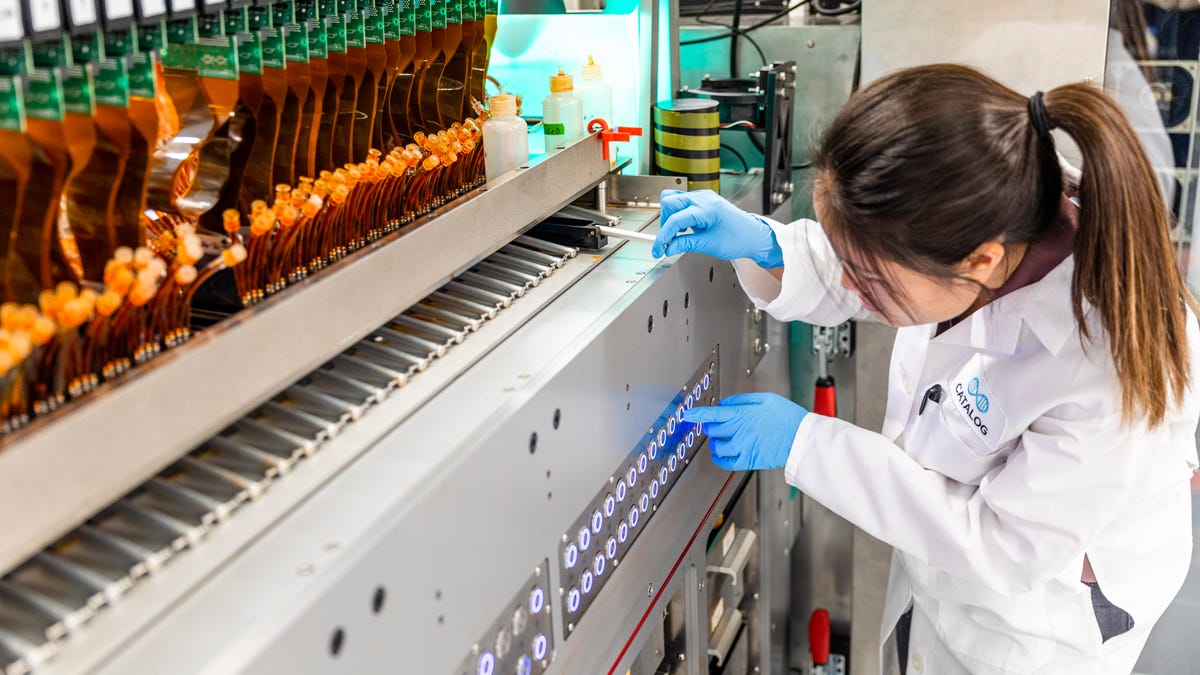DNA data storage startup expands into DNA computing, too
Catalog believes chemistry is a viable alternative to electronic circuits.

Tracy Kambara, head of molecular biology at Catalog, works with the company's DNA storage and processing machine, called Shannon.
Startup Catalog already knew DNA could be used to store data. Now, the company is setting out to use life's genetic molecules for data processing, too.
On Thursday, Catalog said it had secured a $35 million investment that it will use to improve its DNA storage and processing machine, called Shannon, to make it faster, smaller and a better foundation for business. The machine can perform up to 500,000 chemical reactions per second to manipulate artificially created DNA molecules, according to the company.
The Boston-based company doesn't expect its products to replace general purpose computing hardware. Instead, the company wants to accelerate specific jobs, such as fraud detection or seismic data processing.
DNA computing is one of several radical new ideas emerging from a computing industry struggling to deliver faster chips. It uses the same chemical base pairs, represented by the letters C, A, T and G, as the DNA that stores your own genetic information. Catalog uses a collection of 114 specific combinations of 25 to 30 base pairs, each one like a Lego brick that connects to its neighbor in accordance with particular mathematical rules. To store and retrieve data, you communicate with chemical reactions.
The result will a system that Chief Technology Officer Dave Turek expects will enable processing that's so efficient you'll be able to run computing jobs all the time.
"I'm going to put a beaker of DNA on the shelf. I'm going to infuse it with a molecular load of computational elements," Turek said. "Whenever I'm away, that computation is continuing in the background at really, really low energy."
For archiving data, DNA is a stable molecule with a long useful shelf life that can span tens of thousands of years, according to Catalog estimates. Standard genome sequencing equipment can read the stored data. The cost and speed of DNA sequencing equipment has steadily improved for years.
Startup Catalog's plan spans years, and so far the company has research partners more than customers. The company's goal is to speed up its current DNA processing machine, called Shannon, during the first half of 2022 in order to demonstrate its use for solving computing challenges. It hopes to begin selling its technology, starting with data archiving and expanding to computing afterward, in about three years.
Hanwha Impact Partners led the funding round.

